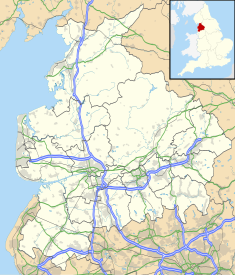| Poolfoot Cottage | |
|---|---|
 Viewed from Heys Street | |
| Location | Thornton-Cleveleys, Lancashire, England |
| Coordinates | 53°52′56″N3°00′28″W / 53.882247°N 3.007792°W |
| Area | Borough of Wyre |
| Built | 1694 |
Listed Building – Grade II | |
| Designated | 16 August 1983 |
| Reference no. | 1281132 |
Poolfoot Cottage is a historic building on Heys Street in Thornton-Cleveleys, Lancashire, England. Originally a pair of cottages, the buildings were later converted into a single dwelling. It has cobble walls, now rendered and whitewashed, with a slate roof. It is in a single storey with five bays. The windows vary and include French windows, a sliding sash window, and a bay window. On the front is a modern porch. [1]






